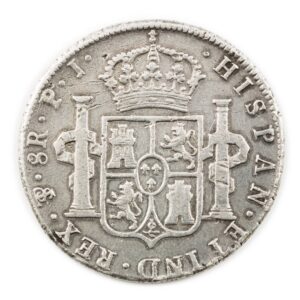A Journey Through Time: US Coins Before the Birth of the US Mint
When we think of American coins, we often picture the iconic designs of the US Mint, such as the Lincoln penny, the Buffalo nickel, or the Kennedy half-dollar. But what about the coins that circulated in the American colonies before the establishment of the US Mint in 1792? These early American coins tell a fascinating story of the nation’s history, from its colonial beginnings to the dawn of independence. In this blog post, we’ll embark on a journey through time to explore the fascinating world of US coins before the birth of the US Mint.

Colonial Currency: A Patchwork of Coinage
Before the US Mint was established, the American colonies were a patchwork of different currencies and coinage systems. Each colony had its own currency, often denominated in pounds, shillings, and pence, reflecting the British monetary system of the time. However, there was a severe shortage of circulating British coins in the American colonies, leading to a reliance on a diverse array of foreign coins and colonial-issued currency.
Spanish Pieces of Eight
One of the most widely accepted coins in colonial America was the Spanish silver dollar, often referred to as the “piece of eight” because it could be easily divided into eight smaller units, or “bits.” This coin, minted in various Spanish colonial mints, was the de facto currency in many parts of North America.
Spanish silver dollars were highly desirable due to their consistent weight and silver content. They were used in everyday transactions and even influenced the early American system of currency, with the term “dollar” becoming synonymous with the Spanish dollar. The American dollar sign “$” is thought to be derived from the “P” and “S” superimposed on each other, representing the pillars and waves found on the reverse of the Spanish dollar.
Colonial Coinage
In addition to foreign coins, some American colonies issued their own coinage. These colonial coins were often minted in limited quantities and featured unique designs. One notable example is the Massachusetts Pine Tree Shilling, minted in the 17th century. This coin featured a pine tree on the obverse and the denomination on the reverse.
Other colonies, such as Virginia and Maryland, also issued their own coins. These colonial coins are highly sought after by collectors today, as they represent a fascinating chapter in American numismatic history.
Continental Currency: The Revolutionary Era
The American Revolutionary War, which began in 1775, created a pressing need for a standardized currency to finance the war effort. In response, the Continental Congress issued a series of paper notes known as “Continental Currency.” These notes were the first paper currency authorized by the newly formed United States, and they played a crucial role in funding the war for independence.
However, the Continental Currency notes faced significant challenges. They suffered from rampant counterfeiting, leading to a loss of confidence in their value. The phrase “Not worth a Continental” became a common expression, highlighting the depreciation of these notes. Despite these challenges, Continental Currency represents a significant milestone in the development of American currency.
Private Minting and Tokens
In the absence of a central mint, private individuals and companies sometimes took it upon themselves to mint coins and tokens for local use. These tokens, often made of copper or brass, were used in trade and commerce and served as a form of small change.
One notable example is the Fugio cent, authorized by the Continental Congress in 1787 and minted by the New Haven, Connecticut, coppersmith James Jarvis. The Fugio cent featured a sundial and the motto “Mind Your Business,” emphasizing the importance of time and industry in the young nation.
Shaping the Future: The Birth of the US Mint
The need for a unified national currency became increasingly evident as the United States moved toward independence. In 1792, the US Mint was established by the Coinage Act, signed into law by President George Washington. This marked a crucial turning point in American numismatics.
The US Mint was tasked with producing standardized coins for the young nation, effectively ending the era of disparate colonial currencies and private coinage. The first coins minted by the US Mint were the Flowing Hair coinage, consisting of the Flowing Hair Chain cent and the Flowing Hair half dollar. These coins represented a new era of American coinage, with designs that featured Lady Liberty and the American eagle.
Legacy of Early American Coins
The coins and currency of pre-Mint America hold a special place in the history of numismatics. They reflect the challenges and innovations of a young nation striving for independence and financial stability. Collectors and historians alike are drawn to these early American coins for their historical significance and unique designs.
Today, collectors have the opportunity to acquire these pieces of American history through the numismatic market. Colonial coins, Continental Currency notes, and private tokens are highly sought after by collectors, and their value can vary widely depending on factors such as rarity, condition, and historical significance.
Conclusion
Before the establishment of the US Mint in 1792, the American colonies and the early United States were a melting pot of different currencies, coins, and tokens. Spanish pieces of eight, colonial coinage, Continental Currency, and private tokens all played a role in shaping the nation’s monetary history.
These early American coins tell a compelling story of a young nation striving for financial stability and independence. They are a testament to the resourcefulness and innovation of the American people during a pivotal period in history.
As we admire the familiar faces on modern US coins, let us not forget the intriguing and diverse world of US coins that existed before the birth of the US Mint. These coins are not only valuable collectibles but also windows into the rich history of the United States and its journey toward becoming a nation.

